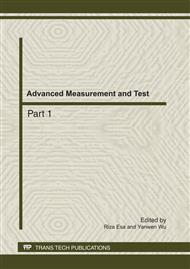p.569
p.573
p.579
p.585
p.591
p.597
p.603
p.610
p.617
Relative Thermal Contrast Analysis in the Inspection of Wind Turbine Blades Using Pulsed Thermography
Abstract:
The rotor blade is an important component in wind turbine generator, it consists of glass fiber reinforced plastics (GFRP) and sandwich areas containing wood or plastic foam, different defects may be generated because of manufacturing problem. To improve the safety of wind turbine blades, pulsed thermography is being investigated in this study. Surface defects, such as air bubbles, edge bonding, etc. were easily and clearly detected on several full scale blades. Several specimens were manufactured to simulate the adhesive conditions between supporting spar and GFRP shells. The direct analysis of the original, 1st or 2nd derivatives was normally applied to judge any possible defects in the measured sample, and also used in quantitatively calculation. This study compared the relative thermal contrast (RTC) of the original and 1st derivative for air bubbles at shallow depth and deficiency adhesive bonding at deep depth, the calculation of the RTC could give us the approximate best time to analysis defects of different depth and types. The comparison also indicated that it is better to use the 1st derivative than the original to analysis the deep defects, however, there is no significant advantage in the analysis of shallow defects between the original and 1st derivative.
Info:
Periodical:
Pages:
591-596
Citation:
Online since:
July 2011
Authors:
Price:
Сopyright:
© 2011 Trans Tech Publications Ltd. All Rights Reserved
Share:
Citation:


